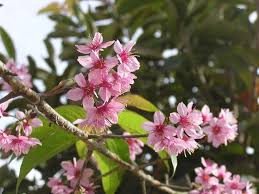
Marigolds are popular and versatile flowers that can brighten up any flower garden or landscape with their vibrant colors and easy-to-grow nature. Whether you’re a seasoned gardener or a beginner, marigolds are a fantastic addition to your outdoor space. In this comprehensive guide, we’ll explore everything you need to know about growing and caring for marigolds in flower gardens and gardens:
**1. Choosing the Right Varieties:**
Marigolds come in various sizes, colors, and types, so it’s essential to select the right varieties for your garden. Common types include French marigolds (Tagetes patula), African marigolds (Tagetes erecta), and signet marigolds (Tagetes tenuifolia). Consider factors such as plant height, flower color, and growth habit when choosing marigold varieties for your garden.
**2. Selecting an Ideal Location:**
Marigolds thrive in full sun, so choose a sunny location in your garden with well-drained soil. Avoid planting marigolds in areas with heavy shade or poor drainage, as this can lead to leggy growth and susceptibility to disease.
**3. Preparing the Soil:**
Before planting, prepare the soil by removing weeds and incorporating organic matter such as compost or aged manure. Marigolds prefer slightly acidic to neutral soil with good fertility and drainage. Amend the soil as needed to create an ideal growing environment for your marigold plants.
**4. Planting Marigold Seeds or Transplants:**
Marigolds can be grown from seeds or transplants, depending on your preference and the time of year. If starting from seeds, sow them directly into the garden after the danger of frost has passed, following the spacing recommendations on the seed packet. Alternatively, you can purchase young marigold plants from a nursery or garden center and transplant them into your garden.
**5. Watering and Fertilizing:**
Keep the soil consistently moist but not waterlogged, especially during the germination and establishment stages. Once established, marigolds are relatively drought-tolerant and require less frequent watering. Fertilize marigolds with a balanced, water-soluble fertilizer according to package instructions to promote healthy growth and abundant blooms.
**6. Deadheading and Pruning:**
To encourage continuous flowering, deadhead spent blooms regularly by pinching or cutting them off at the base of the stem. This will redirect the plant’s energy into producing new blooms rather than seed formation. Additionally, remove any yellowing or damaged foliage to maintain plant health and appearance.
**7. Pest and Disease Management:**
While marigolds are relatively pest and disease-resistant, they may occasionally be affected by aphids, spider mites, or fungal diseases such as powdery mildew. Monitor your plants regularly for signs of pests or disease, and take appropriate action if necessary, such as hand-picking pests or applying organic insecticidal soap or fungicides.
**8. Companion Planting:**
Marigolds are excellent companion plants for vegetable gardens, as their strong fragrance can help repel pests such as nematodes, aphids, and whiteflies. Consider interplanting marigolds with tomatoes, peppers, eggplants, or other garden vegetables to deter pests and attract beneficial insects.
**9. Mulching and Weed Control:**
Apply a layer of organic mulch, such as straw or shredded bark, around your marigold plants to conserve moisture, suppress weeds, and maintain soil temperature. Mulching also helps prevent soil erosion and compaction, contributing to overall plant health and vigor.
**10. Enjoying the Beauty of Marigolds:**
Finally, take the time to appreciate the beauty and versatility of marigolds in your garden. Their vibrant colors, long-lasting blooms, and attractive foliage make them a delightful addition to any landscape. Whether used as bedding plants, container specimens, or border accents, marigolds are sure to bring joy and color to your outdoor space.
In conclusion, growing and caring for marigolds in flower gardens and gardens is a rewarding and straightforward process. With proper soil preparation, watering, fertilizing, and pest management, you can enjoy a bountiful display of colorful blooms throughout the growing season. Whether you’re a beginner or an experienced gardener, marigolds are a must-have addition to your garden repertoire.










